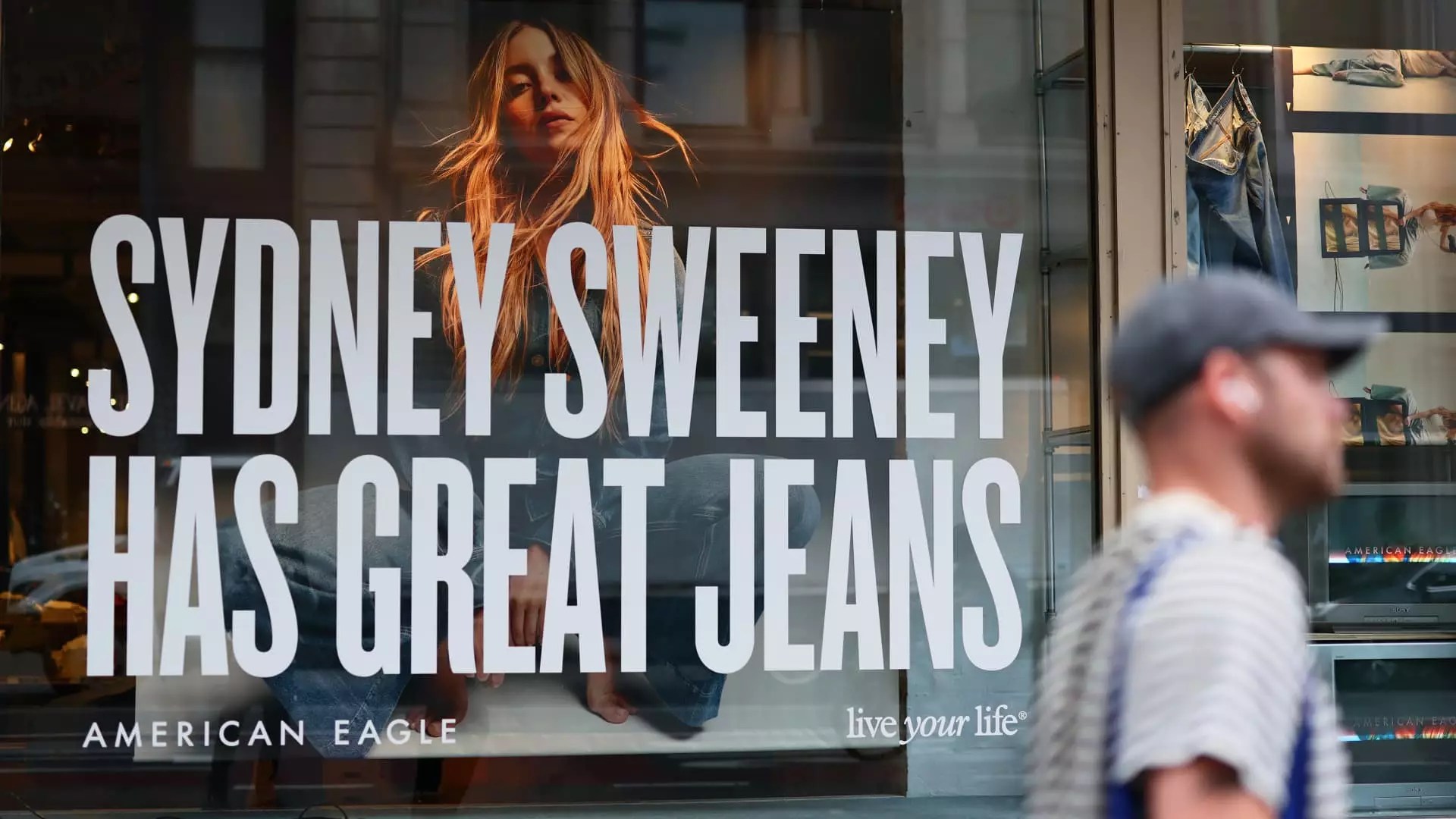In the ever-evolving realm of consumer culture, American Eagle’s recent marketing gambit reveals both the potential and peril inherent in navigating a polarized society. The retailer’s decision to center its fall campaign around actress Sydney Sweeney, accompanied by the provocative slogan “Sydney Sweeney has great jeans,” exemplifies a calculated effort to appeal to a particular demographic—namely, conservative consumers who feel alienated by the so-called “woke” marketing trends dominating modern advertising. Yet, this move is far from a guaranteed success; it confronts the complex realities of cultural segmentation that brands must wisely interpret to avoid alienating broader audiences.
This campaign underscores how brands increasingly find themselves caught between opposing cultural currents—whether to adopt edgy, politically charged narratives or to retreat into more traditional, “safe” messaging. American Eagle’s pivot suggests a conscious shift towards that latter, more conservative-leaning audience, betting that a relatable, non-controversial appeal will invigorate flagging sales. However, the choice to emphasize a slogan that many interpret as double entendre or subtly rooted in racial and aesthetic stereotypes raises questions about authenticity, intention, and societal sensitivity. In a time when social media rapidly amplifies any misstep, marketers are sadly more vulnerable to being scrutinized—and canceled—by audiences whose perceptions are increasingly defined by ideological divides.
The Risks of Disconnected Messaging in a Polarized Market
The fallout from American Eagle’s campaign illustrates how marketing that strives for “cultural resonance” can quickly turn into a liability if not carefully calibrated. The controversy over the slogan’s underlying implications, whether perceived as a benign focus on fashion or as a veiled commentary on physical genetics, exemplifies the tightrope walk brands face. The backlash from critics who argue the campaign objectifies or sexualizes the actress reveals the broader societal discomfort with marketing that appears superficial or tone-deaf. Yet, American Eagle’s muted response—merely insisting the slogan pertains to jeans—suggests a crucial misunderstanding: in a polarized environment, ambiguity can be seen as evasiveness, which exacerbates mistrust.
Furthermore, the campaign’s initial financial rebound, fueled by social media attention, hints at how controversy can temporarily boost visibility but does not guarantee sustainable sales growth. The broader economic context—declining retail sales, macroeconomic headwinds, and consumer hesitancy—adds layers of complexity. It becomes clear that cyclical marketing gimmicks may generate fleeting buzz, but they cannot substitute for genuine brand strength rooted in authentic connection and value, especially when economic uncertainty influences consumer confidence.
Strategic Implications for Future Cultural Engagement
The American Eagle scenario also offers a valuable lesson for brands seeking to navigate a fragmented society: aligning marketing strategies with well-understood, authentic values will always be wiser than opportunistic stunts aimed solely at scoring political points or catering to niche segments. In many ways, the strength of a center-right approach lies in its recognition that consumer loyalty depends on balance—respecting tradition without alienating modern sensibilities; appealing to shared values without dismissing the complexity of individual identities.
The case also highlights the importance of understanding cultural signals and their long-term implications. Companies should exercise caution when adopting marketing narratives that could be misconstrued or perceived as provocative, especially when the stakes involve reputational damage or alienation of key customer groups. A more prudent approach may involve emphasizing quality, craftsmanship, and timeless fashion over fleeting cultural acts, ensuring the brand remains relevant without risking controversy.
In essence, American Eagle’s bold move reminds us that marketing in a divided society is less about riding waves of outrage or popularity and more about cultivating credibility and authentic engagement. It’s a delicate dance—one that requires genuine sensitivity and strategic foresight. When corporations fail to understand this balance, the consequences can be lasting, damaging their reputation and bottom line, and entrenching cultural divides rather than bridging them.


Leave a Reply